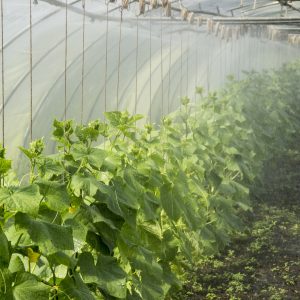Animal breeding can be anything from a serious hobby or part time business (eg. breeding and selling pets), through to a very serious and possibly highly sophisticated profession. This course provides an excellent starting point whatever level you plan to operate at.
E-Learning Structure
The duration of this online course is 100 hours. This consists of 7 in-depth lessons:
- Introduction To Genetics
- Genetics
- Selection
- Pure Breeding
- Introduction To Cross Breeding
- Cross Breeding
- Livestock Improvement
Course Aims
- Explain how genes control the inheritance of characteristics, using two specific examples of animal breeding.
- Distinguish between the phenotype and the genotype, of a specified farm animal.
- Distinguish between dominant and recessive gene pairs.
- Explain the differences in the function of chromosomes, of a specified fowl, when compared with a specified mammalian farm animal.
- Describe the linkage of gender with the expression of non-sex character traits, in a specified farm animal.
- Explain the role of mutation in animal breeding, including both positive and negative aspects.
- Explain the role of the environment in all factors which determine genetic expression in animals.
- Explain the relevance of hybrid vigour to breeding different animals, including; *chickens *pigs *sheep
- Explain heritability in different classes of livestock, including: * dairy cattle *beef cattle *pigs *sheep.
- Develop a set of aims for a breeding program, for a chosen farm animal.
- Develop a checklist of criteria for selecting animals in a breeding program for a specified type of farm animal.
- Explain natural selection, by giving an example of its application in a farm animal breeding program.
- Explain artificial selection in animal breeding programs, including: * it’s aims *the methods used.
- Explain genetic regression by giving an example of its possible occurrence in a farm breeding program.
- Design a checklist of factors to consider when purchasing breeding stock for a specified farm situation.
- Explain how an animal breeder in the learner’s locality selects animals from which to breed, for a commercial breeding program.
- Distinguish between different types of straight breeding, including: *close breeding *line breeding.
- Explain how a specified pure breed (ie. straight breed) is maintained.
- Compare the advantages and disadvantages of line breeding in a breeding program for a specified type of farm animal.
- Explain where it would be appropriate to use line breeding methods in animal breeding programs.
- Explain where it would be appropriate to use close breeding methods in animal breeding programs.
- Write a procedure for straight breeding of a specified type of animal.
- Differentiate between different types of cross breeding, including: *terminal cross *two breed cross *back cross *three breed cross *rotational cross.
- Explain the concept of ‘grading up’, as it relates to commercial animal husbandry.
- Evaluate ‘crossbreeding’ in an animal breeding program investigated by the learner, to determine its relevance to the situation.
- Determine a commercial situation, in which crossbreeding may be justified.
- Explain the services provided by a specified Breed Society in cross breeding, on a specified farm.
- Write a procedure for cross breeding of a specified type of animal.
- Define breeding terminology including: *artificial insemination *synchronised heats *ova transplants
- Describe the breeding programs which use artificial insemination, synchronised heats and ova transplants.
- Explain the importance of synchronised heats to breeding animals.
- Describe two different testing methods, observed by the learner that are used for animal breeding programs,
- Evaluate the relevance of breeding methods, that are used on a specified property, to the stated aims of the property owner.
- Describe the husbandry procedures which may be carried out during the pregnancy of a specified farm animal.
- Describe husbandry practices which may be carried out during the birth of a specified type of farm animal, including: *routine husbandry procedures *emergency husbandry procedures
- Plan the management of a breeding program to maximise male breeding performance for either: *dairy *pigs *poultry *beef *sheep *horses
- Perform and record the birth of a specified animal.
How Does A Warnborough Online Course Work?
You can start the course whenever is convenient for you. You will be studying from home and have access to support from our qualified tutors. Practical exercises and research tasks will be set at the end of each lesson – including an assignment. You will submit this assignment to your course tutor, who will mark your work and give you constructive feedback and suggestions.
If you have any questions please contact us.





